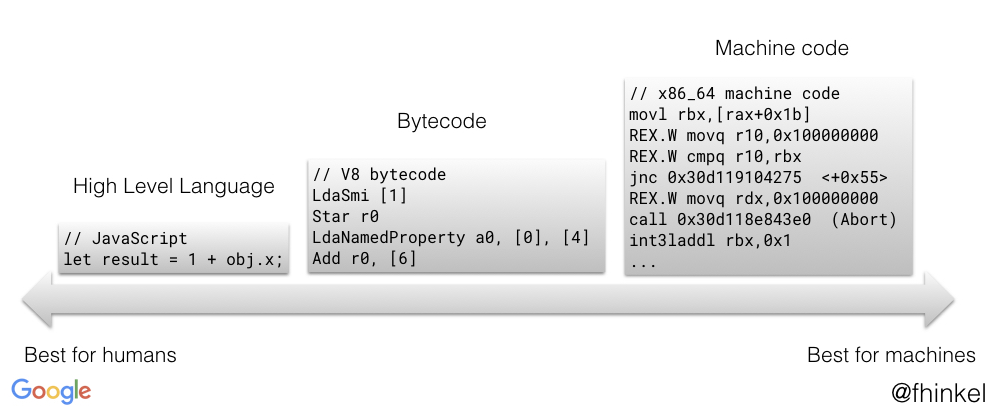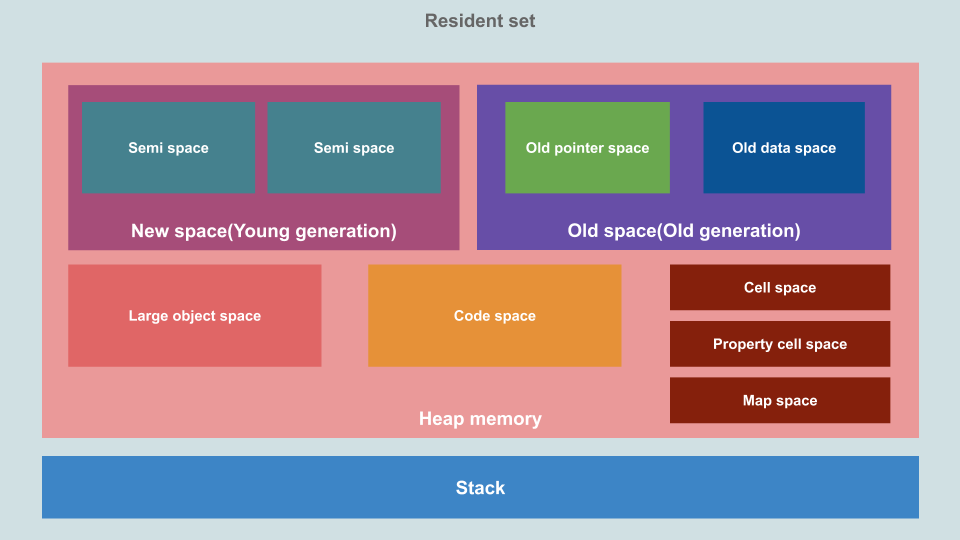V8 Engine
Since Javascript is an interpreted language, it needs an engine to interpret and execute code.
- The V8 engine interprets JavaScript and compiles it down to native machine code.
V8's compiler is lazy— it won't convert a function's code until that function is called.
Pipeline
Immediately prior to execution, Javascript gets compiled to native machine code.
- Right before execution, an AST is generated from the Javascript with a parser.
- Ignition (the interpreter) generates Bytecode from this AST.
- bytecode is an abstraction on top of machine code. As a result, it uses the same computational model as the CPU (Central Processing Unit)
- TurboFan (the optimizing compiler) takes the Bytecode and generates optimized machine code.
- known as just-in-time compilation, and this is where Javascript engines get their speed edge from.

The V8 engine itself it written in C++
Since JavaScript is single-threaded V8 also uses a single process per JavaScript context
- therefore if you use service workers it will spawn a new V8 process per worker.
Bytecode
V8 bytecodes are small building blocks that implement Javascript functionality when composed together.
- bytecode is about 25%-50% the size the average baseline machine code.
Each bytecode specifies its inputs and outputs as register operands.
Bytecode works at the level of abstraction where the code is determining how to store and retrieve values stored in memory register.
Bytecode uses 2 type of register:
- accumulator register
- the
returnkeyword of a function basically says "get me the value in the accumulator register"
- normal register (e.g.
r0,r1...)
We can see the bytecode generated with
node --print-bytecode myFile.js
Example syntax
- Load (
Ld) small integer (Smi) 42 ([42]) into the accumulator (a) register
LdaSmi [42]
Memory structure of V8 Engine

Resident Set - A running program has some allocated memory in the V8 process, called the resident set.
Heap memory
This is where objects or dynamic data is stored
Only the new space and old space is managed by garbage collection.
The heap is divided into:
- New space
- Old space
- Large object space
- Code space
- Cell space, property cell space, and map space
New space
- New space is made of two parts, to and from.
- New space is where new objects live.
- These objects are short-lived.
- objects stored here are quickly garbage collected
- The size of this space can be controlled using the V8 flags
--min_semi_space_size(initial) and--max_semi_space_size(max).
Old space
- objects that survived two rounds of garbage collection are moved to the old space.
- Old space contains 2 parts:
- old pointer space - Contains survived objects that have pointers to other objects.
- old data space - Contains objects that just contain data (e.g. strings, numbers, arrays)
- The size of this space can be controlled using the V8 flags
--initial_old_space_size(initial) and--max_old_space_size(max).
Stack memory
there is one stack per V8 process
This is where static data including method/function frames, primitive values, and pointers to objects are stored.
The stack memory limit can be set using the --stack_size V8 flag.
The Stack is automatically managed and is done so by the operating system rather than V8 itself.
References
https://deepu.tech/memory-management-in-v8/
Backlinks